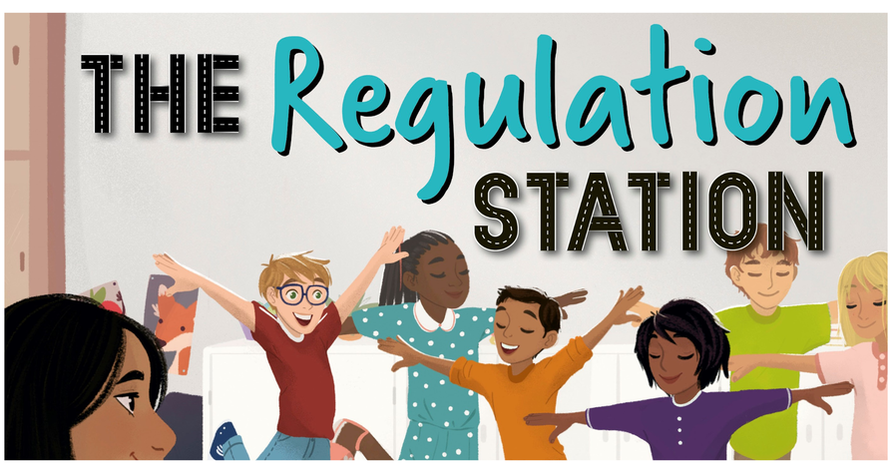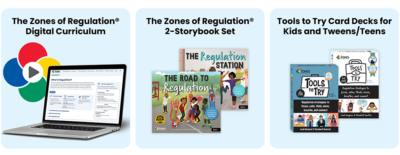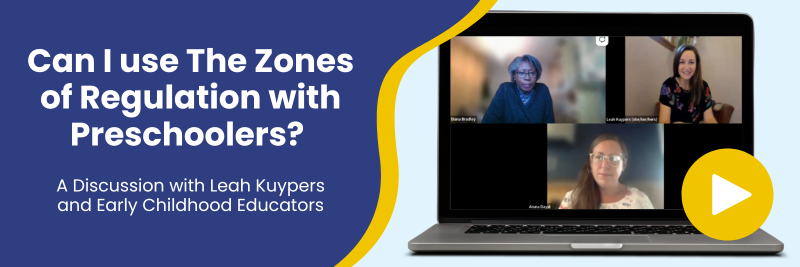What is a Regulation Station?
A designated space for learners to use regulation tools and strategies can go by many names- “calm corner”, “regulation station”, “break area” to name a few. Using The Zones of Regulation curriculum as your guide, you and your learners will explore how to identify feelings and physical sensations within each Zone, reflect on triggers and common situations, and find ways to communicate with each other about how you are feeling on the inside (rather than outward behavior).
Integrating Best Practices for Emotion Regulation
Along the way, be sure to emphasize and model that ALL THE ZONES are OK, and that we all experience a full range of feelings throughout the day. Using the common framework and language within The Zones of Regulation will help to create a climate where learners feel safe and supported, no matter their Zone, before digging into tools and strategies for regulation. Here are some tips for adding a regulation space to your classroom or group space. While these best practices are geared toward classrooms in schools, they can easily be adapted for the home and/or therapeutic spaces. For up-to-date info on The Zones including training and resources, visit zonesofregulation.com
Regulation Station Tips:
- A Regulation Station is a non-punitive space and should not be seen as a negative by students. It is NOT a place to send a student when in trouble, rather a place to be to help them manage their Zones (feelings/energy/states of alertness).
- Consider coming up with a name for the regulation station together as a class to engage students in making it their own community space.
- The Regulation Station can be a strategy for ANY of the Zones. Some learners who are quick to go to the Red Zone may benefit from proactively using the Regulation Station as a Green Zone tool to support them maintaining a sense of wellbeing by giving their nervous systems a chance to relax.
- Spend time systematically teaching and practicing each tool that might be housed in the Regulation Station before adding it there.
- Establish expectations around how to use the Regulation Station, such as how many students, how often, appropriate use, clean-up and respect for materials in it. Some students may need to use it more frequently than others and this can be framed in a conversation around equity vs. equality.
- Placement suggestions – Preferably off to the side of the room, but not in back. Ideally where students can still see and hear instruction but not have to be right in the mix of it all. There is a balance between privacy and safety/inclusion.
- Expect all students to be curious when first introduced and give them time to explore. Set aside time for students to visit before officially opening it up for use (i.e.: students with name that starts with A-M can give it a try before lunch, students N-Z after lunch).
- Establish as a class a reasonable time on how long to use the Regulation Station (preferably with a timer or visual) and practice going back to their learning spots. Remind students, “Tools help us do our jobs as students and regulate, but don’t replace the work we need to do.” If time is up and a student needs more support regulating, gently encourage the student to pick a different tool.
- Set aside time to reflect as a classroom community on which tools seem to be most effective, and whether some tools should be added or taken away.
- Model using tools as an adult, using the Regulation Station yourself. You can say, “I’m in the _____ Zone. Can anyone give me an idea of which tool might help me take care of my Zone?”
- Don’t emphasize that students need to use tools to “get back to the Green Zone”, this may be harmful to some learners because it doesn’t honor their unique state. Instead you can say “We use our tools to help use take care of our Zone and work toward our goals.”
- Some students need the lower sensory load that this space provides so avoid having problem solving conversations here. This area is primarily used to support their regulation needs, those conversations can happen after student is in a more regulated state outside of this area.
Illustrations from The Zones of Regulation Storybook Set
by L. Kuypers and E. Sautter, 2021, socialthinking.com
RESOURCES FOR TEACHING THE ZONES AND ZONES TOOLS






